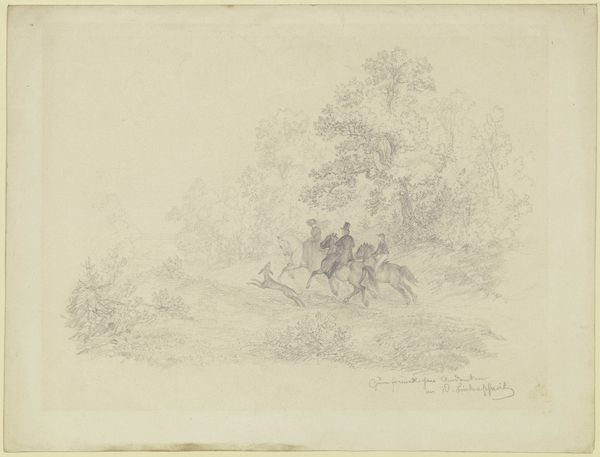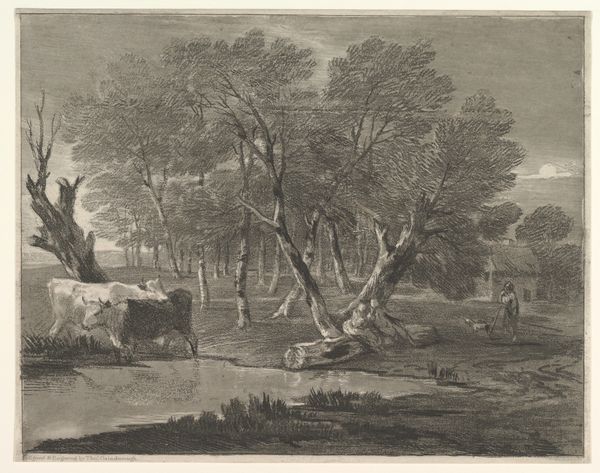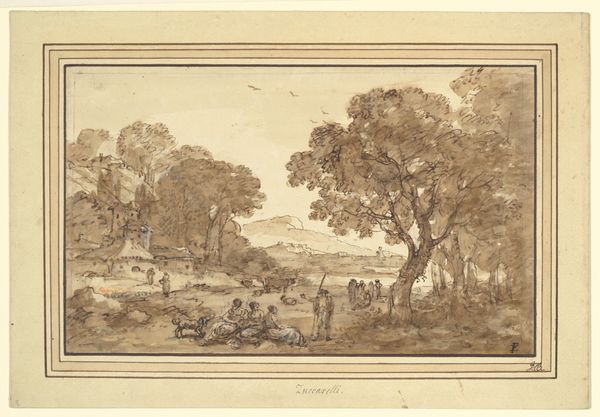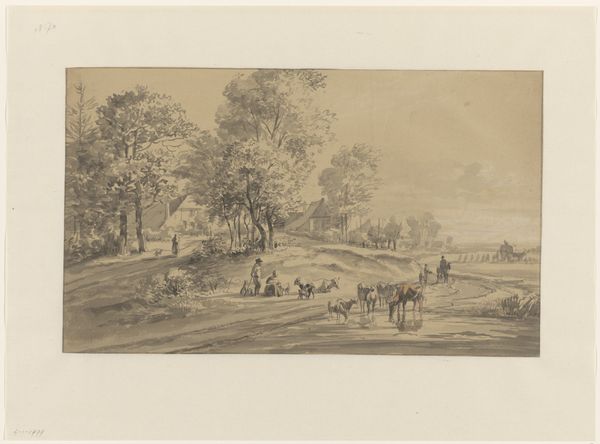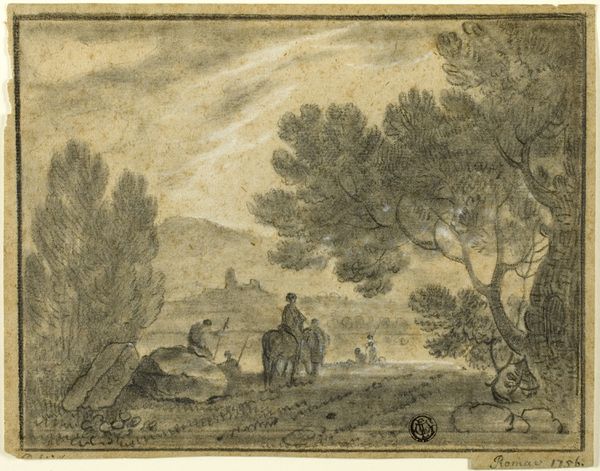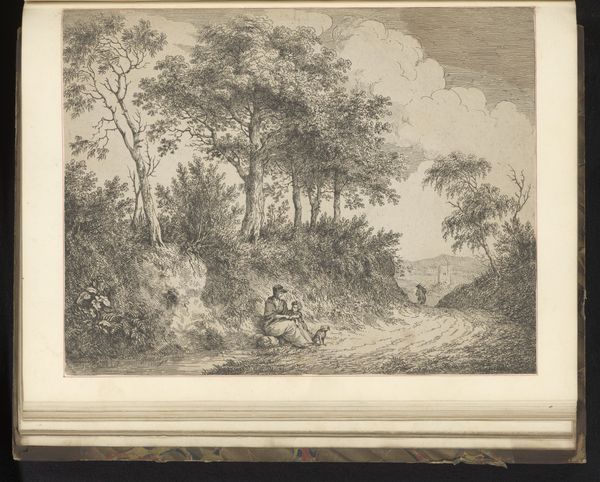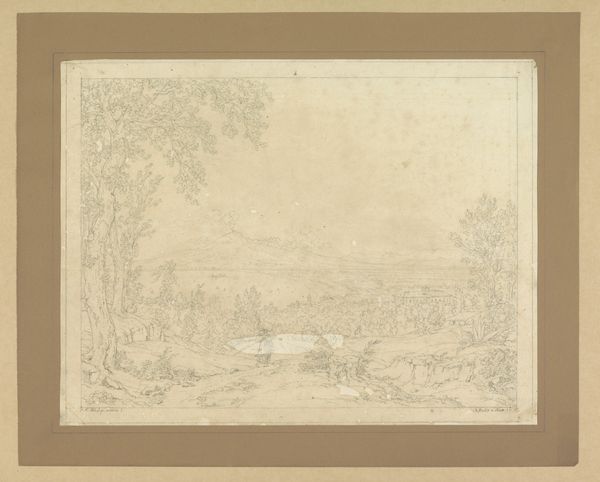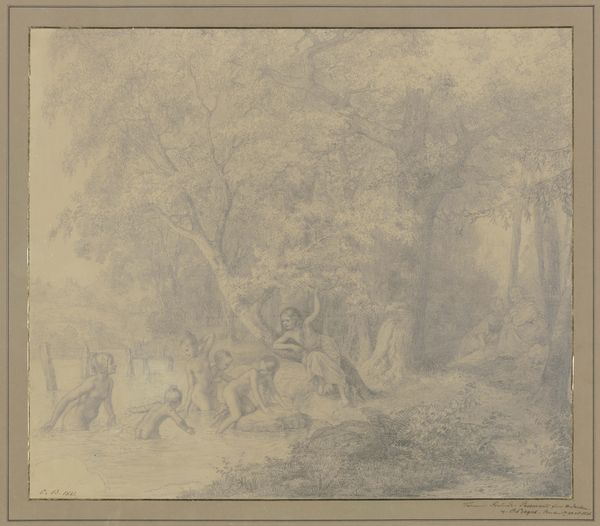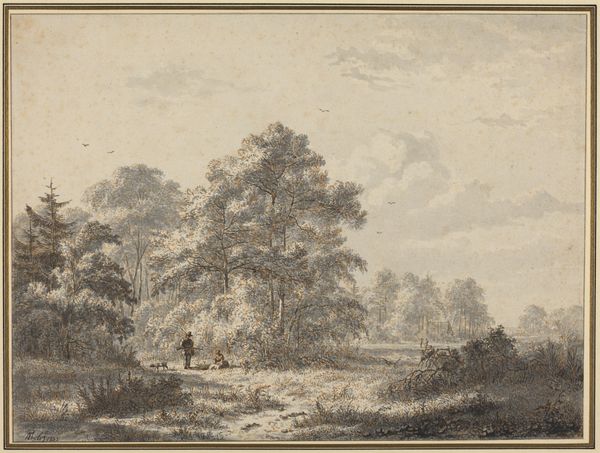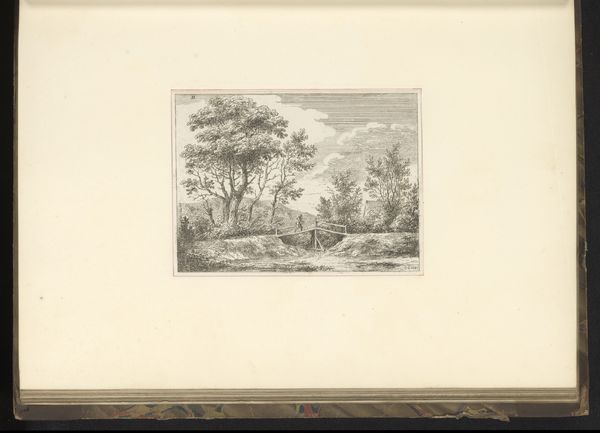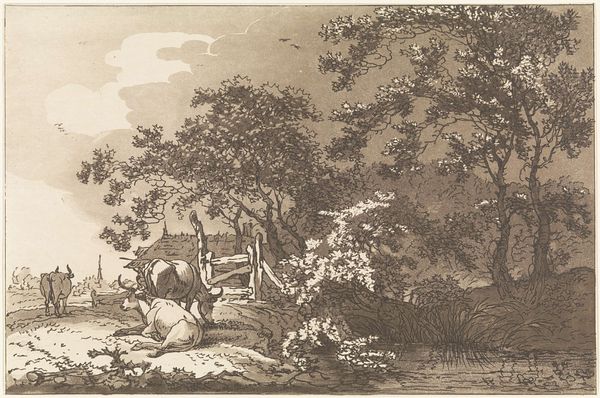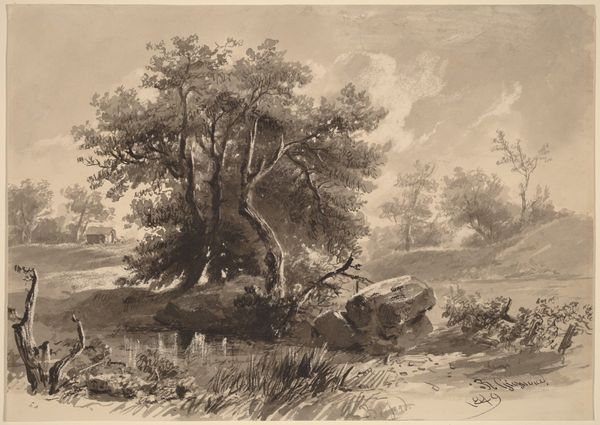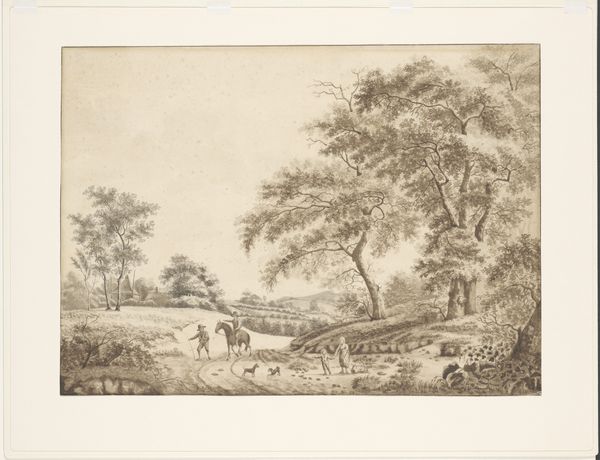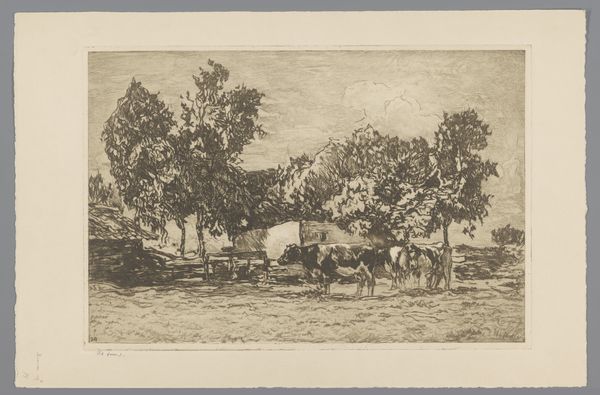
Battle between the Jiccarilla Apachees and Camanchees 1861 - 1869
0:00
0:00
painting, gouache
#
water colours
#
narrative-art
#
painting
#
gouache
#
landscape
#
figuration
#
watercolour illustration
#
watercolor
Dimensions: overall: 45.9 x 61.9 cm (18 1/16 x 24 3/8 in.)
Copyright: National Gallery of Art: CC0 1.0
Curator: Immediately, the painting strikes me as quite tense, almost theatrical, wouldn't you say? There’s a stark stillness imposed over evident conflict. Editor: Well, the inherent contradiction you're picking up on certainly reflects the historical moment. We are looking at "Battle between the Jiccarilla Apachees and Camanchees" created sometime between 1861 and 1869 by George Catlin. Curator: Catlin's always seemed to frame these intercultural clashes from a particular perspective, one influenced, I suspect, by the era's popular romanticism. Look at how this work idealizes Indigenous combat, staging it like an epic performance while omitting the devastating consequences of settler colonialism. Editor: You make a critical point. It’s crucial to remember that paintings like these weren’t neutral records but shaped by the socio-political contexts in which Catlin operated. The patronage system, the public’s expectations regarding Indigenous peoples... These factors played a major role in influencing how Catlin created and disseminated these images. Curator: Precisely. Take note of the positioning: Native figures become part of the American West landscape. The narrative is dominated by implied notions of civilization versus wilderness, erasing Native people’s complex histories, identities, and political structures. I do find it fascinating that it's rendered in watercolor. There is almost a nostalgic air, yet a powerful charge, even though that medium has sometimes been viewed as minor. Editor: Watercolor certainly affects the impression, imbuing a feeling of something glimpsed fleetingly or fading, ironically strengthening its claim to some authentic depiction. Curator: How should a contemporary audience navigate these romantic portrayals that often exoticize their subjects? It requires critical awareness, examining the artist’s background, his influences, and asking questions. Whose stories are being told and how? Whose are silenced? Editor: I couldn't agree more. We need to examine historical art critically and interpret it within the broader narrative of history, considering factors such as audience reception and historical context, constantly striving to challenge and contextualize prevailing orthodoxies. It gives such art continued meaning. Curator: By adopting a critical perspective, we hope this visit leaves you with thoughtful ideas. Editor: Thank you for joining us on this examination.
Comments
No comments
Be the first to comment and join the conversation on the ultimate creative platform.
